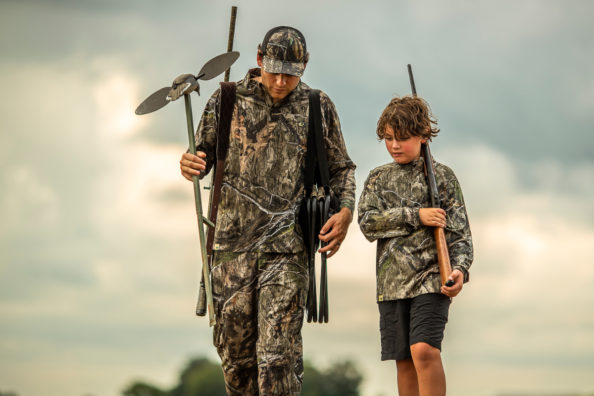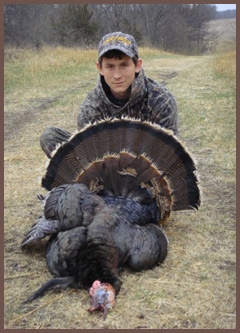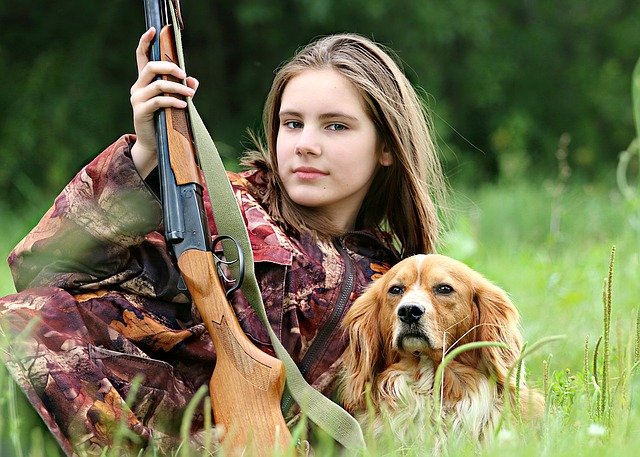
The Pronghorn antelope has an incredible eyesight, making it essential to recognize predators from long distances. Without cover, the antelope must outrun any approaching predator. The following are some interesting facts about this antelope. Find out more about this remarkable animal by reading the following. Find out how you can spot one. Here are some facts and figures about the Pronghorn. Let's get started. Here are some facts about Pronghorn.
Large eyes
The pronghorn antelopes are among the most vision-impaired animals in North America. Their eyeballs can measure 1.4 inches across. Even though their vision isn't as sharp as a human's, it is still very good. You might have wondered just how the pronghorn antelope manages to see so clearly. Read on to find out more. You may be surprised by the information we have compiled.

Fast speed
Pronghorn antelope is able to defend itself against coyotes as well as wolves thanks to its fast running speed. This acrobatic antelope has developed a running style that is perfect for the conditions it lives in. It can run at speeds of up to 40 miles per hour because of its large heart. Their hollow hair helps shed excess weight and blocks out the cold in winter. They are able to run faster because of their large front legs that support most of their weight.
Migration
For decades, scientists and biologists have been fascinated by the long migration of pronghorn Antelope. They migrate north through the Great Plains between spring and fall, creating a stable habitat in the northern Rocky Mountains. From March through April, pronghorns travel northward through Green River Basin. Here they spend the winter months. Two researchers have documented this migration. Their researches have led to some new discoveries, including the existence of giant tortoises within the area.
Predators
Pronghorn antelopes look like deer and live in western North America. They weigh between 90 and 120 pounds and stand approximately 31/2 feet tall from shoulder to rump. Their bodies are reddish-brown to tan with white cheeks, belly, inner leg coverings and stomach. Black neck patches, and masks are worn by males. Their horns are between 12-20 inches long and lyre-shaped. The horns curve inwardly toward each other.

Conservation efforts
Humans once decimated the Pronghorn Antlopes. The species was resurrected thanks to conservation groups and hunters. Today, the population hovers around 1.1 million animals, and the pronghorn can be found roaming across public lands in many states. Visit a wildlife refuge in western America if you wish to see pronghorns living in their natural habitat.
FAQ
Why does America have so many hunters?
Hunting can be enjoyed by both men as well as women. Hunting requires dedication and skill. Hunting isn't just for shooters and gun enthusiasts. People love the outdoors and are attracted to it because of their love for nature. They enjoy spending time alone in the woods, observing wildlife and learning about our environment.
Hunting is a great way to spend quality time with friends and family, as well as learn valuable skills such as patience, teamwork, and self-reliance.
Hunters often enjoy the outdoors even more after they've hunted. This is why so many hunters choose to pursue this hobby.
Hunting is something that many people love because they feel it will bring them closer to the natural world. Hunting provides a unique opportunity to observe wildlife up close. It allows you interact with wild animal without disturbing their natural habitat.
Hunting is a great way to practice your aim and improve your skills. It may take some time to hit the target when you start hunting. However, practice will help you to develop your shooting style.
Some people also enjoy hunting because it helps them stay fit and healthy. Hunting is one of the best ways to keep yourself physically active. You will need to walk long distances and climb trees to reach your prey. This increases your heart rate and burns lots calories.
Hunting is also a great way to get some fresh air. You can feel relaxed from the smell of gunpowder.
Hunting is a wonderful way to bond and enjoy your family. The hunt can also be shared by family members as a way to tell stories and share experiences. They can also help each other learn new skills and techniques.
Hunting is fun! There is nothing better than getting out of the city and taking a hike in the wilderness.
There are many opportunities to become a hunter. You don't have to be rich to participate in this hobby. There is no special equipment required. All that is required is a desire for outdoor activities and a willingness learn new things.
You can join local clubs or search the internet for information about hunting.
What should I know about hunting
To hunt successfully, you must understand how the animal moves, what its habits are, and how to avoid getting hurt.
It is essential to be familiar with the hunting laws in your state. Some states allow hunting in certain ways, while others prohibit it altogether.
Other factors include terrain and weather conditions.
Consider whether hunting is something you want to do alone or with friends.
Hunting is something that most people prefer to do with their friends. Because this helps you stay focused on your goal. If you're not with someone else, you could miss your chance.
Hunting requires planning. Planning is essential to ensure you hunt in the right place.
Prepare your weapons as well. Before you leave for home, make sure to clean and check that your guns are functioning properly.
When hunting, you should always wear appropriate clothing. Always dress appropriately for the weather.
Be sure to have plenty of water and food. In case of an emergency, make sure you have enough food and water.
Never leave anything behind. It could be damaged or lost.
You should pick a safe area that is free from predators before you go hunting.
Make sure you follow the rules set out by the government. These regulations protect both wildlife, and humans.
Where can I get a gun?
Gun shops are found all over the nation. These stores sell guns from low-cost starter models to more expensive high-end models.
Some gun shops sell firearms only. These stores have knowledgeable staff members that can help customers choose the right gun.
Check out our handgun buying guide.
Where can I purchase a gun? Is it really necessary?
For certain species of hunting, you will need a gun.
Many states require hunters have a firearm. The type you choose depends on the game you are hunting and the state where you live.
You can buy a rifle, shotgun, handgun, muzzle loader, crossbow, or archery weapon at any sporting goods store.
Make sure you choose a weapon that meets your needs. A.22 caliber pistol is a good option if you're looking for small game hunting such as squirrels and rabbits.
You might consider purchasing a larger caliber weapon if you are planning to hunt large game such as deer, elk and bears.
If you don't feel confident handling a weapon, do not buy it. Guns can be dangerous. Always keep it unloaded until you are ready to shoot.
Make sure the gun has been checked by a qualified gunsmith before you buy it. Ask the seller to show you how to load or unload the weapon.
Examine the manufacturer's warranty. If there is no warranty, ask the dealer what kind of guarantee they offer.
Ask the dealer for a copy if their safety instructions. These documents should include details about safe storage, maintenance, and disposal.
You should check the serial number. If it starts with "NIB" (or "New In Box"), the gun was made brand new.
If the serial number starts with an odd number, then the gun has been previously owned.
If you are unsure whether the gun has been used, contact the manufacturer directly. You should get more details from the manufacturer.
How many Americans are dependent on hunting?
More than 300 million hunters live in the United States. This means there are more hunters than New York City residents.
Hunting has been a popular American pastime for centuries. But today, fewer Americans hunt for sport than ever before. According to the U.S. Only 2 percent of Americans hunt regularly, according to Fish & Wildlife Service (FWS). Even lower is the number of young adults who hunt regularly.
While hunting may seem like something that is long gone, it is still popular among the older generation. A recent survey found that 68 percent of baby boomers plan to hunt again when they retire. Hunting is a way for them to connect with the natural world and enjoy the outdoors.
Hunting is not a priority for younger generations. In fact, according to the National Shooting Sports Foundation, only 18 percent of millennials consider themselves avid shooters.
FWS works hard to ensure that America's wild places are accessible to all.
The agency launched "Wild Lands", a campaign to raise awareness of public lands across the nation in 2014. The agency's goal is educate the public about the importance of conserving these areas and encourage them visit them.
The Wild Lands initiative encourages conservation efforts. One example is the partnership between FWS and the National Rifle Association to create a youth shooting sports program called Project Gunter. This program teaches kids how to safely handle firearms and helps them develop skills such as marksmanship and safety.
Project Gunter now includes women and minorities. As a result, more children are learning how to shoot guns and become active participants in wildlife conservation.
What is the most important part when hunting animals?
How do we get there You must first learn how to accurately shoot. Next, you must learn how to hit your target. Finally, we need to learn how we can make adjustments if we fail.
Knowledge is key to hunting. If you don't know what you're doing, then you'll never improve. Even though you might feel that you have improved through better shots, it doesn't mean you will be any better. The same goes for hitting targets. If you don’t understand the reasons you’re missing, it will be difficult to improve. That means you need to know what you're aiming for.
This is where knowledge comes into play. Your ability to hunt depends on your understanding of the animal you're trying to kill. You want to learn as much about the animals that you see while you are out in nature. You want to know their habits, their behaviors, and even their personalities. You can plan your hunts in this way to ensure they run smoothly.
It is important to always learn from other people who have achieved success in the past. There are many books out there on the subject. In addition, there are websites like www.thehuntingzone.com that offer great tips and advice. You can also find people with years worth of experience. They can help you to identify what works well and what doesn’t.
Once you have learned everything, it is time for practice. Practice makes perfect. It's not enough to practice until you feel confident. Instead, you should practice until you become confident. Confidence allows one to relax and enjoy each step. Relaxation allows you to focus on the task at hand. Concentration will allow you to seize every opportunity. Opportunities are only available when you're calm and focused.
Now it's time put your new skills to work. Don't fret if you fail. Keep practicing and improving. You will eventually achieve success.
What are some of the benefits of hunting
Many cultures have long practiced hunting. It was used for food and shelter as well as tools and medicine. People hunt today for sport and recreation, as well as for food and entertainment. The meat of hunted animals is typically eaten within minutes after they are killed, while skin, hair, feathers, bones and antlers can be sold as trophies.
Hunting is not only a way you eat, but it's also a way you live.
Hunting families have strong ties to their friends and family because they spend so much time together. They share their stories and memories over meals and around campfires.
Hunters enjoy nature and wildlife, which helps them appreciate life on Earth.
When they care for game animals, they learn responsibility and respect for others.
Conservation helps hunters be better citizens. They work to protect habitats, species, and the environment. They are able to understand the amount of land and water that is necessary for survival.
Hunters are part a larger community. Their families depend on them. They help each other. They support local businesses.
Hunters are known for their generosity. Many Hunters donate money to support children, seniors, veterans, or other groups.
Hunters can also donate their time to help people in need. They might volunteer their time with organizations like the Humane Society and the Red Cross.
Statistics
- - Percent of residents with paid hunting licenses: 0.7%- (stacker.com)
- Less than 1% of Hawaii's population has a hunting license. (stacker.com)
- Over the past 50 years, the number of hunting licenses in California has been on a rapid decline, falling 70% from more than 760,000 in the 1970s to under 268,000 in 2020—even as the state's population has skyrocketed, according to The Mercury News. (stacker.com)
- In less than 20 years, Rhode Island saw a 40% drop in the number of hunting licenses for residents, according to The Valley Breeze. (stacker.com)
External Links
How To
How to hunt wild hogs
Wild hogs are large animals found in North America, Africa, Asia, and Europe. Wild hogs are omnivores. They eat plants and small animals like rabbits, mice and birds. They usually eat at night. The gestation period is approximately six months. One piglet then emerges. A sow gives birth every two years. Wild hogs can be solitary, but they may live in herds.
Wild boars are 200 pounds (90 kilograms) in weight. Their head length is between 10 and 12 inches (25-30cm), while their body length is between 20 and 30 inches (50-60cm). Wild pigs have short tails, long legs and broad shoulders. They have a thick layer under their skin of fat.
They have strong senses of smell, hearing and sight. They use these senses to detect danger and find food. They can run upto 35 MPH (56 Km/h) and jump upto 15 Ft (4 m). They have sharp teeth and claws. They are very aggressive when protecting themselves from predators.
Hunting wild Hogs can be difficult as they are agile, intelligent, and elusive. Hunting wild animals requires precision and careful stalking. The animal may flee if hunters take too long to kill it. Hunters who shoot too soon can kill the animal before it reaches cover.
There are many methods of hunting wild hogs. Shooting is the most popular method. Hunting requires that the animal be tracked down and then waited until it is within range. Another method is trapping. Trapping is the practice of placing traps in areas where the hogs are likely to drink. A trap may contain a scent lure such as peanut butter and corn meal. When the trap is opened, the hunter shoots a trapped pig.
Another method is snaring. Snaring involves using a noose made of rope to catch the porc. The best time to catch a pig is during mating season.
Other methods include netting, spearing, and poisoning. To stop pigs from breathing, spearing and netting involve putting a spear or net through the neck of the animal. Poisoning is when the poison is injected into the pig's throat.
Hunters who want to hunt wild hogs must be ready for cold temperatures. To stay warm in some areas, hunters can wear snowshoes. Hunting dogs may be used to track animals.